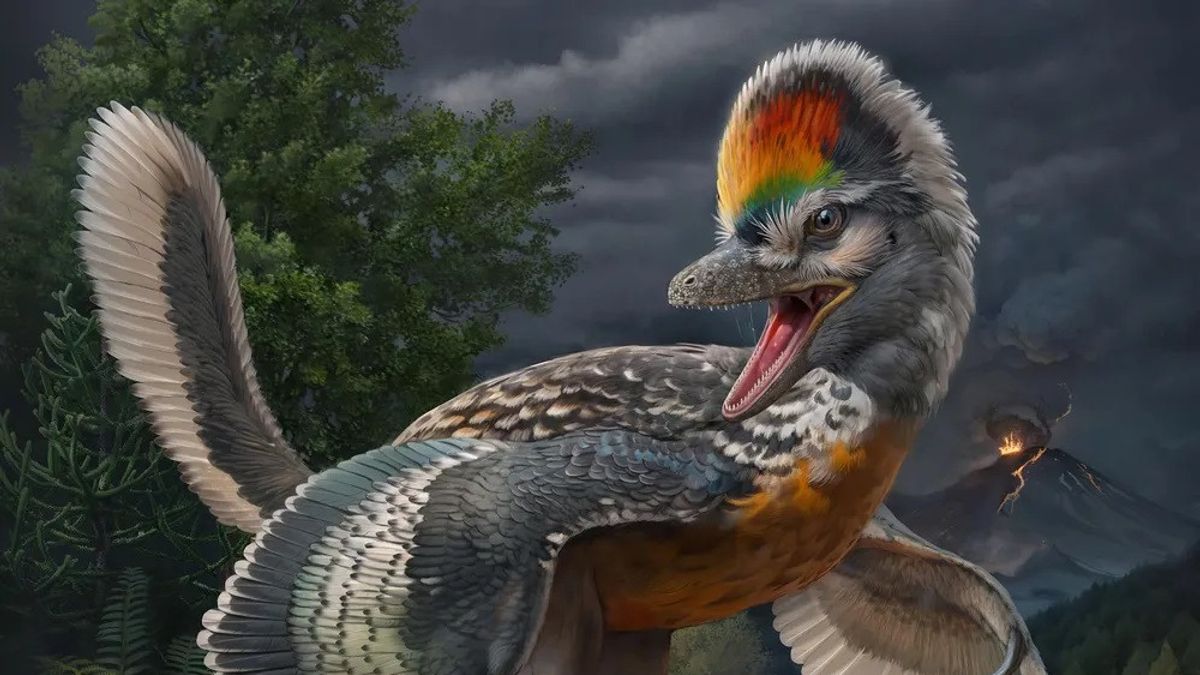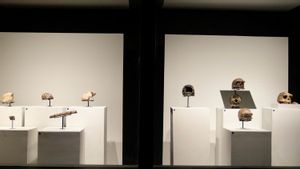JAKARTA - A strange dinosaur fossil with long legs and wings-like arms aged around 148 million - 150 million years was discovered in southeastern China, with puzzling anatomy between fast runners or just like modern birds.
The fossil, which was found in Fujian Province from the Jurassic Period, was named the prodigious Fujianvenator, is considered to help explain the important stage of evolution in the origin of the birds.
Paleontologist study leader at the Institute of Vertebrate Paleontology and Paleoanthropology of the Chinese Academy of Sciences Min Wang said, whether Fujianvenator is classified as a bird, depends on how one defines a bird.
When asked the word to describe Fujianvenator, Wang replied, "I would say'strange.' Fujianvenator is far from similar to any modern bird," he said.
Extraordinary events in dinosaur evolution occurred when a small, hairy, and two-legged dinosaur from a lineage known as theropods gave birth to birds at the end of the Jurassic era, with the oldest known bird, Archaeopteryx, dating back about 150 million years in Germany.
Fujianvenator is a member of a group called avialas which includes all birds and closest relatives of non-oil and gas dinosaurs, Wang said. Although initially simple, birds survived a 66 million-year-old asteroid attack that destroyed other non-oil and gas dinosaurs.
Fossil Fujianvenator, yang ditemukan Oktober lalu, cukup lengkap namun tidak memiliki rekon dan bagian kaki anak tersebut, sehingga sulit untuk meinterpresi pola makan dan gaya hidupnya.
The lower leg bone of Fujianvenator, tibia, is twice as long as its thigh bone. Such dimensions are unique among theropods, a group that includes all meat-eating dinosaurs such as Tyrannosaurus and the like. It also has long-tailed tails.
"The front shell is generally shaped like a bird's wing, but with three scratches on its fingers, which are not present in modern birds. So it can be called wings. It cannot be determined whether it can fly or not. Based on the skeleton characteristics, Fujianvenator may at least not be good at flying," explained Wang.
"The fossil itself does not preserve the hair. However, its closest relatives and almost all the avialan theropods are known to have fur, and fur is widespread among dinosaurs. Therefore, it is not surprising that Fujianvenator has fur," added Wang.
Based on the long anatomy of the leg, the researchers proposed two possible lifestyles, namely fast running or navigating swampy environments such as modern cranes or cranes.
"I'll put my money on the runners," Wang said as if guessing.
Scientists themselves are seeking a better understanding of the origin of birds and non-oil and gas dinosaurs that have bird-like characteristics.
SEE ALSO:
"For me, Fujianvenator represents other interesting evidence showing the widespread spread of various birds-like dinosaurs living almost at the same time and sharing similar habitats with their bird offspring," said paleontologist Zhonghe Zhou of the Institute of Vertebrata and Paleoanthropology, co-author of the study published in the journal 'Nature'.
It is known that the earliest chapter in bird history is still unclear because of the lack of fossils. After Archaeoptyx, a bird the size of aUNted with teeth, long-boned and halfless tails whose fossils were first discovered in the 19th century, was about 20 million years before the next bird appeared in the fossil record.
"One thing is certain. There is still a big gap between the oldest known bird and the second oldest known bird," Zhou said.
The English, Chinese, Japanese, Arabic, and French versions are automatically generated by the AI. So there may still be inaccuracies in translating, please always see Indonesian as our main language. (system supported by DigitalSiber.id)


















